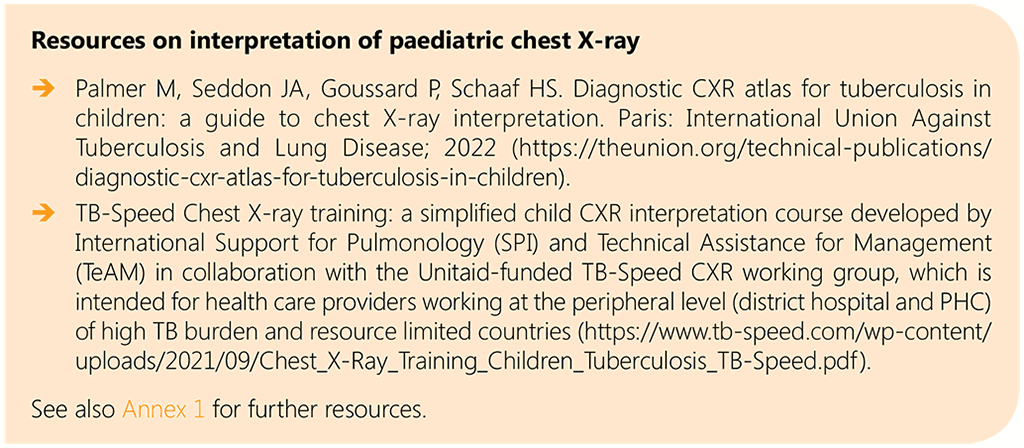Перекрёстные ссылки книги для 4.3.7. Role of chest X-ray
CXR remains an important tool in the diagnosis of TB in children, especially those with negative bacteriological tests or where bacteriological testing is not available or not feasible. Most children with PTB have radiographic changes suggestive of TB. If possible, anteroposterior and lateral films should be obtained in children aged under 5 years, and posteroanterior films in older children and adolescents.
Abnormalities on CXR suggestive of PTB include:
- enlarged perihilar or paratracheal lymph nodes;
- dense alveolar opacification in a child who is not acutely ill;
- miliary pattern of opacification;
- cavitation (more frequent in adolescents);
- pleural or pericardial effusion in a child or adolescent who is not acutely ill.
Adolescents with TB usually have radiographic changes similar to those seen in adults, with apical infiltrates with or without cavity formation or unilateral large pleural effusions being the most common forms of presentation. They may also develop perihilar lymphadenopathy and other manifestations seen more commonly in children. Good-quality CXRs (including a lateral view when possible) are essential for a thorough clinical evaluation and should be read by someone trained in paediatric CXR interpretation (6, 72). Data on the use of computer-aided detection software for automated CXR reading in children remain limited, and further research is needed to make recommendations.
CXR is an important tool to determine severity of disease in children. This is necessary to determine eligibility for the 4-month treatment regimen recommended for children and adolescents aged 3 months to 16 years with non-severe TB.
Children with a decision to start TB treatment based on the integrated decision algorithms described below who have not had CXR as part of their evaluation should ideally have CXR done if available in the health care facility or nearby. This is important to help rule out alternative diagnoses, assist TB diagnosis and determine TB treatment duration. CXR can also be used to evaluate treatment response and alternative diagnoses in children not responding to TB treatment.


 Обратная связь
Обратная связь